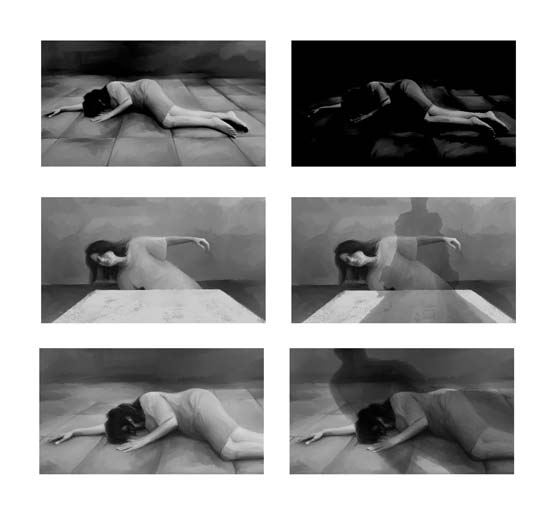“A necessary component for any successful storyteller is the ability to set the appropriate mood for the aud ience. By inducing a particular feeling or state of mind, the storyteller is setting the proper stage for the actions to follow.”
Book Lighting for Animation by P. Jasmine Katatikarn and Michael Tanzillo
In this film, I’ve chosen black and white because first, it’s about a memory, like when we look through old photos, and second, it helps the drama. As soon as I removed the color, all I was left with was black and white and greys in between. There is a meaning behind each scene when light and shadow are shown with white and grey. The light always came on the scene whenever I wanted to offer hope, freedom, peace, and forgiveness, while every black added sadness, cruelty, and loss. There is a purpose behind even the fades from light to darkness. In addition, shadows are used in the second person without showing them, which shows how powerful they are in conveying emotion and effect. Together, they helped me show the message of the story and impact the audience by providing a central role in the narrative. My studies and research on Lighting for Animation by Michael Tanzillo and Jasmine Katatikarn gave me a better understanding of the film’s mood. They noted that “Drama and horror films have much heavier, deeper notes to help audibly set the mood. The visual equivalent is a dark and high contrast image to convey an evil theme.”



Recent Comments